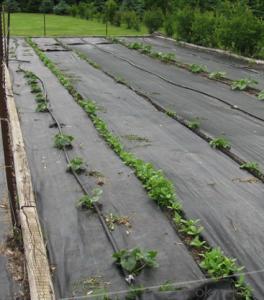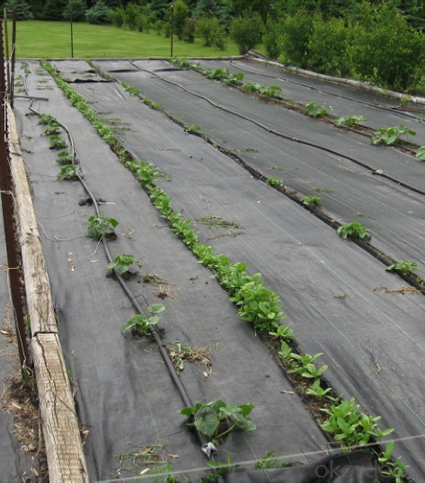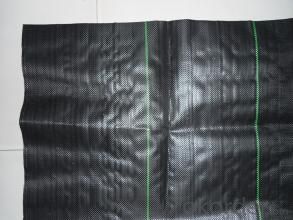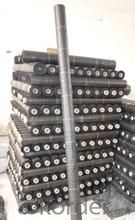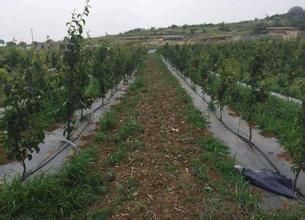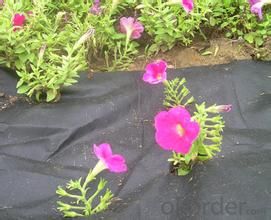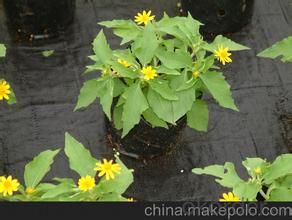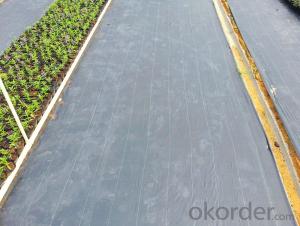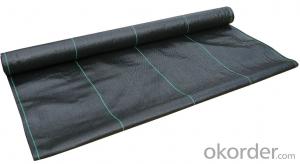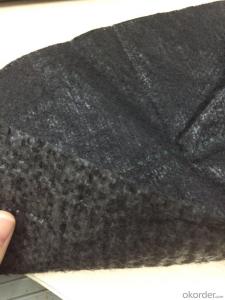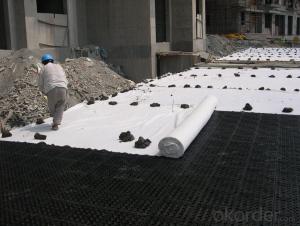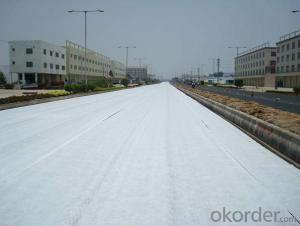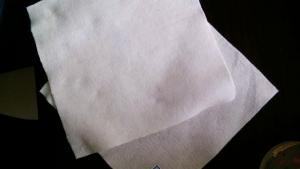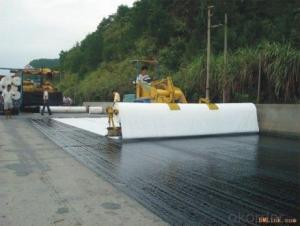Géotextile Texel Polypropylene Woven Fabric/Weed Barrier Fabric for Agriculture
- Loading Port:
- Qingdao
- Payment Terms:
- TT OR LC
- Min Order Qty:
- 5000 m²
- Supply Capability:
- 100000 m²/month
OKorder Service Pledge
OKorder Financial Service
You Might Also Like
Specification
1.Weed Barrier Fabric Description:
The weed barrier fabric is a kind of vertical and horizontal weaving plastic woven cloth. It has good quality of permeability,water seepage and Prevention and control of weeds. Widely used in gardening and agriculture.
Most areas in order to control weeds and prevent the plant roots drill ground Commonly used blow molding of the PE film as grass cloth.Because of the PE film is transparent,sunlight an through the PE film sunlight to PE membrane under the weeds,weeds can for photosynthesis, not prevent weed growth.
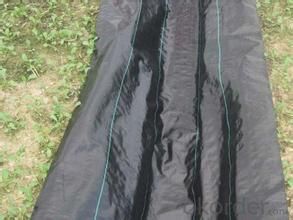

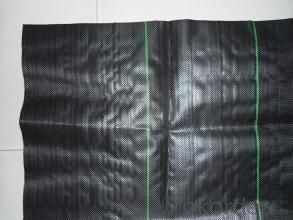
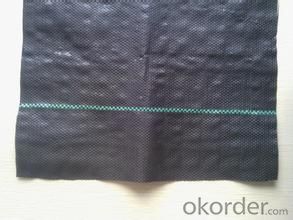
2.Weed Barrier Fabric Functions and Features:
1)Excellent weed control
2)Excellent UV resistance
3)Moisture,fertilizers,air reach plants to allow for healthy soil
4)Good water and air permeability
5)Exceptional toughness and strength
6)Durable,tear-resistant,anti-rot and anti-mildew
7)Light weight,easy to install,follows natural ground contours
8)Ideal for use in landscaped beds,under decks and walkways
9)Fashionable design,high quality,competitive price
10)Long service life
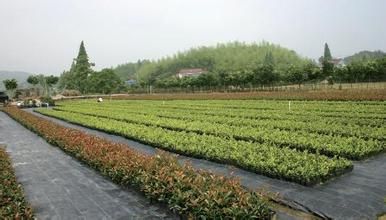
3. Weed Barrier Fabric Usage:
1.Prevent leakage disposal in landfill or waste water or waste dregs disposing field.
2.River bank ,lake dam ,mine remainings ,resevoir ,tunnel ,liquid storage pool(pit ,mine)
3.Preventing leakage in subway ,basement ,tunnel ,hole .
4.Anti-salt leakage in roadbed and other ground sill.
5.The plane direction laying of dam ,the vertical direction laying for ground sill.used in the construction fence and waste material field.
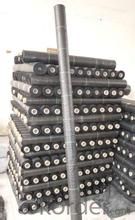
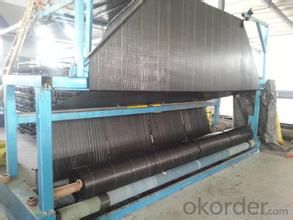
4. FAQ:
Q1: What is your minimum order quantity?
A:The minimum order quantity is 5000 ,but it is negotiable.
Q2:What is your payment terms?
A: T/T,Western Union,Paypal,L/C...
Q3:What is your delivery time?
A:Production time usually costs 2-20 days.
Waiting to cooperate with you!
- Q: What are the key properties of geotextiles?
- Geotextiles have several key properties that make them useful in various applications. These properties include high tensile strength, permeability, durability, and resistance to chemicals and UV radiation. They also offer excellent filtration and separation capabilities, allowing for effective drainage and soil stabilization. Geotextiles are lightweight and easy to handle, making them convenient for installation. Overall, these properties make geotextiles a versatile and reliable solution for erosion control, road construction, and other civil engineering projects.
- Q: What are the benefits of using geotextiles in erosion control?
- Geotextiles offer several benefits in erosion control. Firstly, they provide stability to the soil by preventing its movement and retaining sediment, which helps in preventing erosion. Secondly, they allow water to pass through while trapping sediment, reducing the velocity of flowing water and minimizing the chances of soil erosion. Additionally, geotextiles promote vegetation growth by providing a suitable environment for plant roots to establish, leading to improved soil stability. Lastly, they are cost-effective, easy to install, and have a long lifespan, making them a sustainable solution for erosion control.
- Q: Can geotextiles be used for erosion control in riverbanks?
- Yes, geotextiles can be used for erosion control in riverbanks. Geotextiles are permeable fabrics that can be installed along riverbanks to stabilize the soil and prevent erosion by filtering water, reducing water velocity, and promoting vegetation growth. They provide a cost-effective and environmentally friendly solution for erosion control in riverbanks.
- Q: Can geotextiles be used in railway track stabilization?
- Yes, geotextiles can be used in railway track stabilization. Geotextiles provide reinforcement and separation functions, preventing the mixing of materials and improving the stability of the track. They can help distribute loads, reduce deformation, and enhance the overall performance and lifespan of the railway track.
- Q: Split silk geotextile and filament geotextile relative price which is cheaper
- Split silk geotextile and filament geotextile relative price which is cheaper
- Q: How are geotextiles maintained?
- Geotextiles are typically low-maintenance materials that require minimal upkeep. However, to ensure their longevity and effectiveness, geotextiles should be regularly inspected for any signs of damage or degradation caused by environmental factors or heavy loads. If any issues are identified, appropriate repairs or replacements should be carried out promptly. Additionally, periodic cleaning may be necessary to remove any accumulated debris that could potentially hinder the geotextile's performance. Overall, proper maintenance of geotextiles involves routine inspection, timely repairs, and occasional cleaning to preserve their functionality and lifespan.
- Q: Can geotextiles be used in coastal erosion control?
- Yes, geotextiles can be used in coastal erosion control. Geotextiles are permeable fabrics that can be placed in coastal areas to stabilize soil and prevent erosion caused by waves and currents. They help to retain sediment and protect shorelines from erosion by absorbing and dissipating wave energy. Additionally, geotextiles can promote the growth of vegetation, further enhancing their effectiveness in coastal erosion control.
- Q: How do geotextiles improve the performance of foundations?
- Geotextiles improve the performance of foundations by providing reinforcement, filtration, and separation functions. They increase the load-bearing capacity of the soil, distribute the load more evenly, and prevent the mixing of different soil layers. Additionally, geotextiles help to drain excess water, control soil erosion, and protect the foundation from potential damage.
- Q: What are the different factors to consider when selecting a geotextile?
- When selecting a geotextile, there are several factors to consider. These include the intended application or function of the geotextile, the site conditions and soil characteristics, the required strength and durability, the installation and maintenance requirements, and the cost-effectiveness of the geotextile. Additionally, factors such as compatibility with other materials, environmental considerations, and regulatory requirements may also need to be taken into account.
- Q: Are geotextiles resistant to fungal growth?
- Yes, geotextiles are generally resistant to fungal growth due to their synthetic nature and the materials they are made from.
Send your message to us
Géotextile Texel Polypropylene Woven Fabric/Weed Barrier Fabric for Agriculture
- Loading Port:
- Qingdao
- Payment Terms:
- TT OR LC
- Min Order Qty:
- 5000 m²
- Supply Capability:
- 100000 m²/month
OKorder Service Pledge
OKorder Financial Service
Similar products
Hot products
Hot Searches
Related keywords
